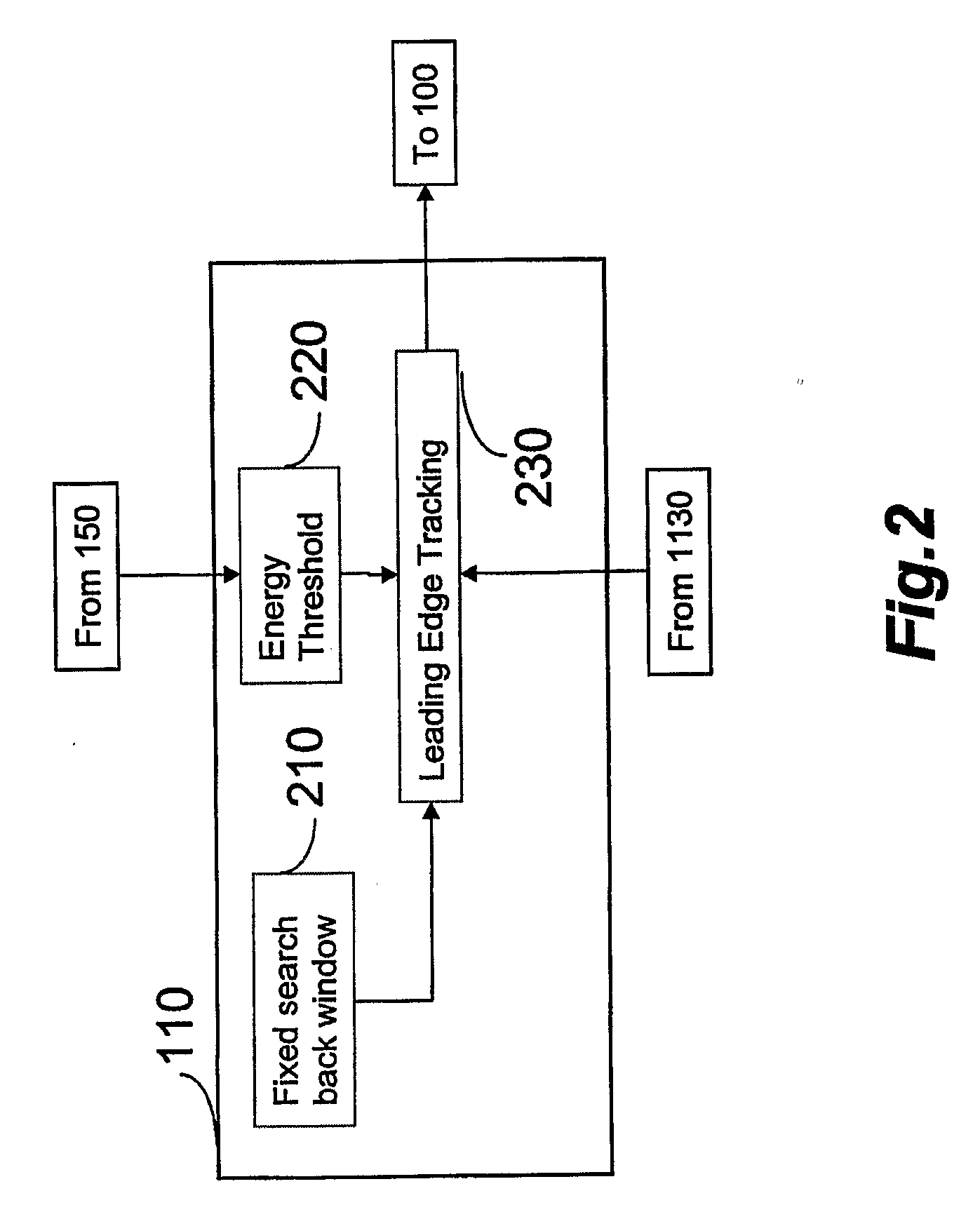Method and Receiver for Identifying a Leading Edge Time Period in a Received Radio Signal
a technology of leading edge time and received radio signal, which is applied in the direction of transmission monitoring, instruments, measurement devices, etc., can solve the problem of not being able to accurately identify the time period having the maximum average received energy
- Summary
- Abstract
- Description
- Claims
- Application Information
AI Technical Summary
Benefits of technology
Problems solved by technology
Method used
Image
Examples
Embodiment Construction
[0036]Referring to further of the drawings, wherein like reference numerals designate identical or corresponding parts throughout the several views, and more particularly to FIG. 1 thereof, FIG. 1 shows a block diagram of a receiver according to an embodiment of the present invention. The receiver includes a signal energy edge detector 110 that receives the received signal 150 and the average energy of the received signal in each time period as determined by the signal energy collector 1130. The signal energy collector 1130 and the signal energy edge detector 110 receive the received signal 150, which results from transmission of the transmitted signal 140 over the radio channel 160. The signal energy edge detector produces a TOA estimate 100.
[0037]FIG. 2 is a detailed block diagram of the signal energy edge detector 110 that includes a fixed search back window section 210, energy threshold section 220 and leading edge tracking section 230. The energy threshold section 220 sets an e...
PUM
 Login to View More
Login to View More Abstract
Description
Claims
Application Information
 Login to View More
Login to View More - R&D
- Intellectual Property
- Life Sciences
- Materials
- Tech Scout
- Unparalleled Data Quality
- Higher Quality Content
- 60% Fewer Hallucinations
Browse by: Latest US Patents, China's latest patents, Technical Efficacy Thesaurus, Application Domain, Technology Topic, Popular Technical Reports.
© 2025 PatSnap. All rights reserved.Legal|Privacy policy|Modern Slavery Act Transparency Statement|Sitemap|About US| Contact US: help@patsnap.com



